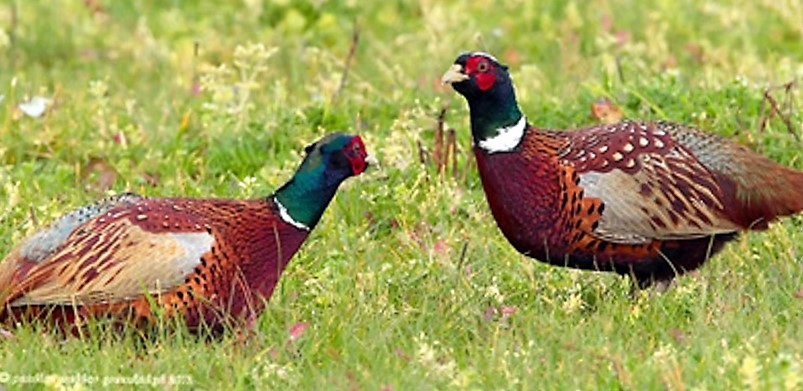
The Ring Necked Pheasant with its beautiful plumage and long streaming tail is a majestic-looking bird. It is also highly regarded on the table, so it is no surprise that humans should attempt to keep them close to hand.
A native of Asia, the pheasant was first introduced to British Columbia in 1882. There have been many introductions in various parts of the province, with birds coming from England and China.
Many of the introductions have failed, and today viable populations are found mainly in the Fraser Valley, southeastern Vancouver Island up to the Campbell River area, the Okanagan Valley, and the Creston and Salmon Arm areas. In some cases, the populations are augmented on a regular basis.

The Ring Necked Pheasant is sedentary, favouring a variety of open habitats. They do quite well in agricultural settings, but with development pressure on these habitats, pheasant populations are declining in many areas. Surveys continue to be done in the spring in some areas, to count the numbers of crowing males.
The Ring-Necked Pheasant are omnivores and their diet varies with seasons. During the winter months, they feed on seeds, grains, roots, and berries. During the summer months, they will feed on insects, plant shoots, spiders, earthworms, and snails. Breeding hens and young chicks eat a greater proportion of animal matter than the rest of the population. While laying eggs, females eat large quantities of snails for the calcium that they need to build stronger shells.
Pheasants build their nests on the ground, using grasses, twigs, and roots. The nests sometimes have a domed appearance when tucked under vegetation. The female can lay up to 28 eggs, but half that number seems to be about average. The eggs hatch within 23 days. The young leave the nest and begin to feed themselves shortly after they hatch.